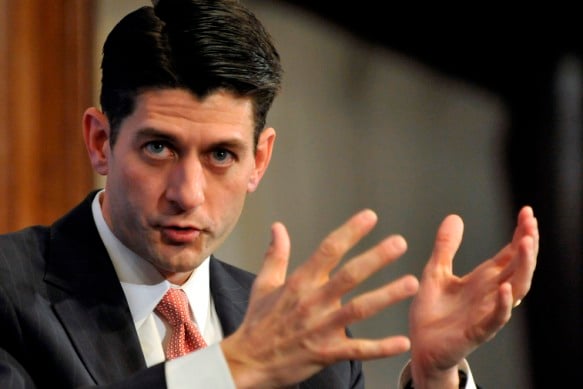Most of the reaction to presumptive Republican presidential nominee Mitt Romney's decision to Rep. Paul Ryan as his running mate has focused on Mr. Ryan's controversial plan to overhaul Medicare.
With Mr. Ryan's ascension to the national GOP ticket Saturday, the debate over entitlements also is likely to get linked to his — and Mr. Romney's — desire to cut investment-income taxation substantially.
In his 2010
Roadmap, Mr. Ryan, R-Wis. and now the House Budget Committee chairman, proposed to transform Medicare from its current fee-for-service structure into a voucher program in which seniors would receive a federal payment that they could put toward the purchase of medical insurance.
Other elements of that plan include reducing marginal tax rates to two levels — 25% and 10% — and eliminating taxes on capital gains and dividends.
There's some difference between Mr. Ryan and
Mr. Romney on tax issues. Mr. Romney is pushing for a permanent, across-the-board 20% tax cut, eliminating capital gains and dividend taxes for households making less than $200,000 annually, and scrapping the alternative minimum tax and the estate tax.
Their plans — a big whack at taxes on one hand and a major overhaul of Medicare on the other — has given Democrats a sizable target. President Barack Obama's campaign wasted no time in attacking Mr. Ryan's plan as an attempt to end Medicare and put vulnerable elderly patients in harm's way.
The Republican ticket hopes to put Mr. Obama on the defensive by forcing him to debate the burgeoning federal debt and deficit while touting what it argues is a courageous budget plan that tackles entitlement spending and a tax plan that encourages economic growth.
The election fight likely will spill over into a deep division between lawmakers on how to tax investment income. Mr. Obama wants to let the capital gains rate rise from its current 15% level to 20% for households making more than $250,000 and to tax dividends at ordinary income rates, which could be as high as 39% if the Bush tax cuts are allowed to expire at the end of the year.
“It certainly intensifies the conversation,” said Clint Stretch, a tax expert in Washington and former legislation counsel for the congressional Joint Committee on Taxation. “It makes the issue of Medicare versus taxes very clear.”
The increased scrutiny on tax policy could put pressure on Mr. Romney to explain how he will keep the income-tax distribution stable while lowering rates on investment income.
“It's hard to imagine a world in which the top income tax rate is 25%, there's a preference for capital gains and dividends and the top 1% to 2% of taxpayers continue to pay the same share of taxes as they do under present law,” Mr. Stretch said. “The biggest impediment to this becoming a reality is that holding the line on taxes means fundamentally dismantling Medicare.”
Mr. Ryan's 2010 proposal shouldn't be viewed as the path that he and Mr. Romney will advocate this fall, according to Doug Roberts, chief investment strategist for Channel Capital Research.
“His Roadmap was more of a starting point than an end game,” Mr. Roberts said. “It played to his political base at the time.”
In the two years since he released his Roadmap, Mr. Ryan has written two House budget resolutions. The one for fiscal year 2013 would institute the two-rate tax system — 25% and 10% — but does not specific rates for capital gains and dividends. It declares that many tax deductions and loopholes will have to be eliminated to achieve the lower individual rates, but it doesn't outline which ones.
Mr. Romney and Mr. Ryan are now “trying to change the nature of the [campaign] debate” to focus on the issue of reducing rates and getting rid of deductions, said Mr. Roberts, author of “Follow the Fed to Investment Success.” Using that framework could help Mr. Romney deflect the charge that he's providing a tax break to the rich.
“It remains to be seen whether Gov. Romney and Congressman Ryan can translate their philosophy and plans into something the everyday person can understand,” Mr. Roberts said.







